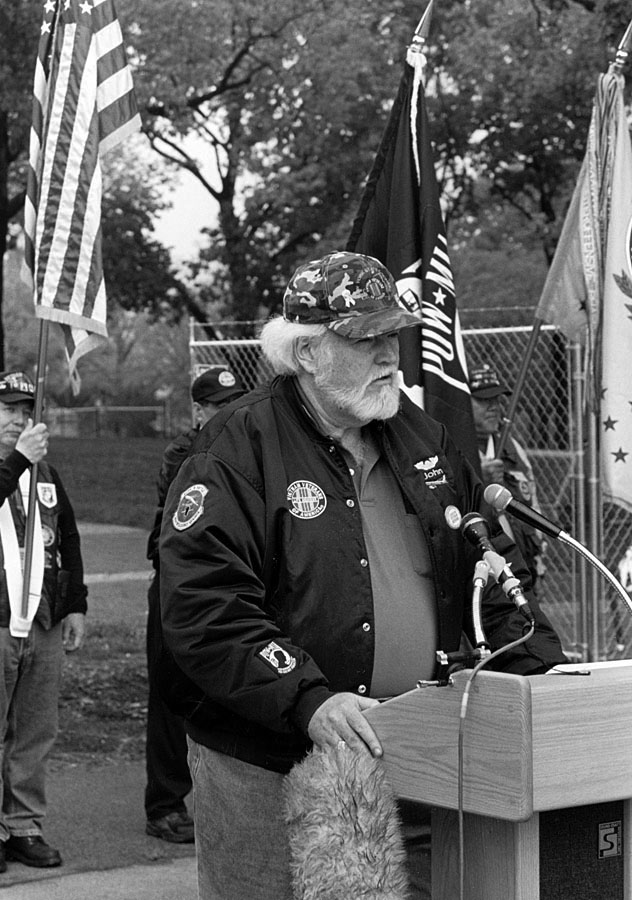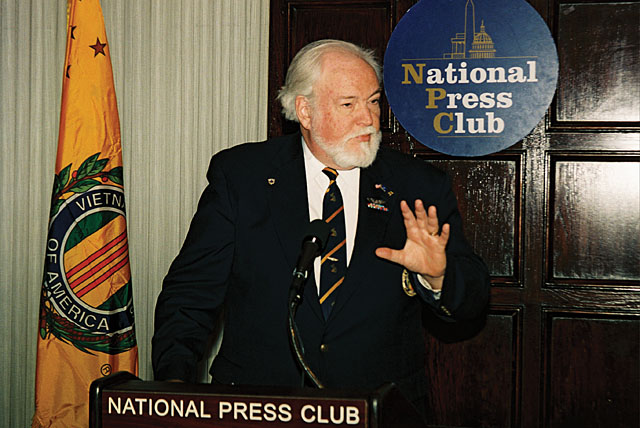 |
|||||||||||
|
John Rowan and the Veterans BY MARC LEEPSON
The crux of the issue, as Rowan—an active VVA member since its founding in 1978—saw it, was “how to get the word out to veterans, because the VA won’t do it.” In addition, Rowan said, “we need to educate doctors and other medical personnel—especially those not in the VA—who may not know or consider connections between military service and health or that certain health conditions can be expected as a result of military service.” So Rowan came up with the idea of a VVA-run department that would work with doctors and other health care providers—as well as with employee representatives, advocacy organizations, and health care firms—to inform veterans, their families, and the medical establishment about health issues associated with military service, as well as the benefits available to veterans.
Since the VHC was established in April of 2008, many organizations have joined the effort. “The first group that signed on was the Lung Cancer Alliance,” said Rowan, a retired investigator with the New York City’s Comptroller’s Office. “They had no clue that exposure to Agent Orange is associated with lung cancer. Now they list military service and exposure to dioxins such as Agent Orange, along with radon and asbestos exposure, as lung-cancer risk factors.” Among the many other organizations working with the VHC are the official organizations representing American family physicians, anesthesiologists, ophthalmologists, physician assistants, surgeons, dentists, urologists, neurological surgeons, psychologists, and psychiatrists, as well as the American Diabetes Association, the American Federation of Government Employees, the American Heart Association, the American Liver Foundation, the American Public Health Association, the Association of American Medical Colleges, and the Leukemia and Lymphoma Society. Also on board are an array of medical companies, including Eli Lilly & Company, GlaxoSmithKline, Pfizer, and Sanofi Aventis, as well as nonprofits such as the National Association for the Advancement of Colored People, the United Mine Workers of America, and the National Rifle Association. “We are happy that all of these organizations are working with us,” Rowan said. “We’re pleased with what we’ve accomplished. It’s taken time, but we’re on the road to achieving our goal of informing and educating about the health problems associated with military service.”
|
|||||||||||
| |
|||||||||||
|
|||||||||||
8719 Colesville Road, Suite 100, Silver Spring. MD 20910 | www.vva.org | contact us |
|||||||||||










.jpg) “We found out,” Rowan said, “that something like seventy percent of veterans don’t use the VA for their health care.” Moreover, most veterans, he said, don’t belong to veterans service organizations such as VVA. “That’s why we set up the VHC, to reach out to people, to get veterans to tell their doctors that they served in Vietnam, or Iraq, or Afghanistan, for example, so that the medical people can more fully diagnose and treat veterans’ health problems related to their military service.”
“We found out,” Rowan said, “that something like seventy percent of veterans don’t use the VA for their health care.” Moreover, most veterans, he said, don’t belong to veterans service organizations such as VVA. “That’s why we set up the VHC, to reach out to people, to get veterans to tell their doctors that they served in Vietnam, or Iraq, or Afghanistan, for example, so that the medical people can more fully diagnose and treat veterans’ health problems related to their military service.”